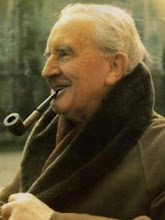
I recently attended a High Mass according to what was mostly the ''liturgical'' norms of 1962. I found the whole ceremony (the music was quite splendid) rather unedifying, untidy, somewhat ungodly (notice these words contain the prefix -un, denoting the absence or lack of a quality, which is fairly typical of the Bugnini half-arsed, DIY, stripped-to-the-bones, or in many cases, mutilated beyond recognition, approach to Liturgy - neither Old Rite nor entirely New Rite, a rather pitiful middle state, rather like your average Anglican!) and was just left with the even stronger conviction that I prefer the Old Rite, and that if you're going to do it, at least do it properly. I can think of no greater enemy to the Traditional Liturgy than pedantic adherents to '62, who would, I expect, do anything to prevent anyone from finding out that the Traditional Roman Rite is centuries older than the 20th century. For people curious about the Traditional Liturgy often turn to the ''powers-that-be,'' as did I when I first ''converted'' to the Old Rite four years ago. I can put it no better than by saying that expecting Miranda, I was greeted by Caliban...
Not having ''watched'' a '62 Rite High Mass from the Congregation for some time now, I forgot how untidy it is, and how, on certain points, it looks entirely meaningless. To give just two examples - the Epistle and Gospel. The Celebrant of High Mass, according to the rubrics of '62, reads neither (nor any other lesson, I wonder what an Ember Day would be like!), but retires to the Sedilia for the Epistle with the Deacon (since neither have a liturgical function at these points), returning to bless the Subdeacon, who transfers the Missal (again, to what purpose is this? Since the Celebrant no longer reads the Gospel, it won't be needed until the Offertory!), and stands at the Epistle corner for the Gospel. If the conduct of the Ministers and Servers is not reckoned to a nicety, it just looks awful, with people getting in each other's way etc.
I wonder to what extent this is reminiscent of the evolution of Low Mass? I am here referring to the ''laziness'' which seemed to be a part of it. If I remember rightly, Bugnini's justification for doing away with the parts of the Mass proper to the Celebrant at the Epistle and Gospel was that in the ''early church'' he didn't read them then. Even were this true, it is still a monstrous anachronism, and its purpose is plainly aliturgical, and, as Tolkien asked, since when was primitiveness any guarantee of value?
There are, of course, other examples of the liturgical ineptitude of '62, but I have not the skill to elaborate them. I leave that to readers. Suggestions in the comment box please! The above photo is, of course, of the Orc liturgist Bugnini, the Freemason who wrought the destruction of the Liturgy, and whose name, an interesting blogger recently picked up, calls to mind the Semitic god Ba'al. Do bearers of this name, by implication, promote idolatry I wonder!?

Personally, given all the doubts that have been raised over the years about the orthodoxy and even the validity of the new liturgy and other sacraments, I find it safer to stick with the traditional rites- the Eastern rite Catholics (not the Orthodox, but the actual Eastern Catholics) or the Tridentine Roman rite. I also avoid the '62 rites.
ReplyDeleteYou guys are lucky that you have such choice. We have Mass according to the 1962 Missal a few times a year, and that's it.
ReplyDeleteThe only reason why 1962 is regarded as the last "Tridentine" Missal is because that is what Archbishop Lefebrve used as a cut off point. Naturally, many of traditionalists (save for some good priests in England) copied and Rome took note.
ReplyDeleteIt is funny how the most anti-Lefebrve people abide strictly by one of his own decisions...
Well, the so-called ''Tridentine'' Rite has not been celebrated since the early 17th century...
ReplyDelete